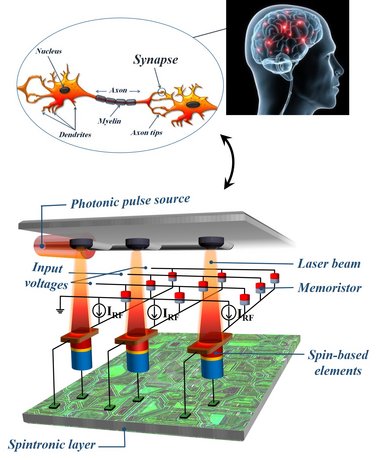
Neuromorphic computing has emerged as a promising approach to mimic the brain and it offers the potential for overcoming the limitation of conventional computers. The current implementations of neuromorphic computing systems (NCSs) are usually designed in CMOS technology, which comes with area and power-inefficiency. Enormous effort has been devoted to optimizing the area and power-efficiency of such NCSs. One of the most promising approaches is the implementation of NCSs using spin-based devices combined with electronics (i.e. spintronics). Although power-density is improved by spintronics-based NCSs, they are still far from the power-density of the brain that is attributed to the traditional way of changing the state of the magnetic moment using a bias current that contributes to 90% of the total power consumed by such NCSs. Given a technique eliminating or decreasing this bias current, the power density of NCSs can be improved by orders of magnitude.
PHOTON-NeuroCom proposes a novel approach that harnesses the benefits of photonics to enhance spintronics-based NCSs by replacing the large bias current of the state of the art NCSs with a short polarized laser pulse. This will lead to at least two and three orders of magnitude lower energy consumption and higher speed in comparison with the state-of-the-art spintronics-based NCSs. This is a major step towards filling the huge gap between the power density of human brains and computers. The main objectives of this project are to model magnetic-photonic interaction, design and simulate an NCS through the extracted model and fabrication of photonic-assisted STNO.
Interested? See the details on the webpage for PHOTON-NeuroCom Project.